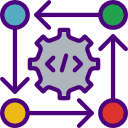The rise of low-code platforms is transforming the landscape of software development by enabling a new category of creators: citizen developers. These are professionals outside traditional IT roles who leverage intuitive, visual development tools to build, customize, and deploy applications. Low-code tools simplify complex coding, making digital transformation more accessible while reducing bottlenecks and revitalizing organizational innovation. This shift not only empowers non-technical employees but also accelerates workflows and brings business ideas to life rapidly, ensuring organizations stay ahead in a digital-first world.
Unlocking Innovation with Accessible Technology
Democratizing Application Development
Low-code platforms make it possible for those without programming backgrounds to build applications. Through drag-and-drop interfaces, pre-built templates, and guided workflows, these tools demystify software creation. Employees from various departments—sales, marketing, operations, and more—can tailor applications to fit their unique needs, eliminating the reliance on overstretched IT teams. The democratization of development allows organizations to respond faster to emerging opportunities or problems, promoting a collaborative environment where innovation flourishes.
Harnessing In-House Business Expertise
One of the most significant advantages of low-code tools is the ability to empower individuals who possess deep knowledge of business processes but limited technical skills. Citizen developers can translate departmental pain points into digital solutions, ensuring applications are finely attuned to operational realities. This direct feedback loop between business challenges and technical implementation leads to more meaningful, purpose-driven apps that address critical needs and drive efficiency.
Accelerating Time to Market
Traditional software development cycles can span months, often stalling progress and leaving businesses lagging behind competitors. Low-code platforms substantially shorten these timelines by streamlining design, development, and deployment. With intuitive interfaces and automation features, citizen developers can rapidly prototype, test, and refine applications, bringing new products and services to market faster. This agility allows organizations to seize emerging opportunities and pivot quickly in response to changing conditions.
Freeing Up IT Resources
By enabling non-developers to handle routine or department-specific app creation, low-code platforms relieve IT teams of a significant maintenance burden. As citizen developers take on smaller projects, IT professionals can focus on more complex, high-impact technological initiatives. This realignment ensures that technical expertise is channeled where it adds the most value, boosting organizational productivity and effectiveness.
Bridging Communication Gaps
Low-code environments facilitate a common language between business units and IT teams. Visual builders, shared repositories, and collaborative interfaces reduce misunderstandings and make it easier to align requirements. This bridging of perspectives leads to solutions that genuinely reflect user needs, minimizes rework, and enhances project satisfaction for all stakeholders. It cultivates an organizational culture where collaboration is second nature.
Encouraging Cross-Functional Teams
With access to low-code tools, teams can become more cross-functional, harnessing the strengths of diverse backgrounds. Marketing experts, financial analysts, and operations managers can partner directly with IT, leveraging each other’s expertise to co-design solutions. This integration fosters innovation and increases engagement as employees see how their input shapes the digital experiences within their organization.
Lowering Costs and Driving Business Agility
Reducing Development Expenses
Conventional software development often involves significant investment in specialized labor and extended project lifecycles. Low-code platforms drastically cut these costs by reducing reliance on expensive developers and shortening timeframes from conception to deployment. With more accessible tools, even teams with limited budgets can execute impactful digital initiatives, democratizing innovation across the organization.

Join our mailing list
